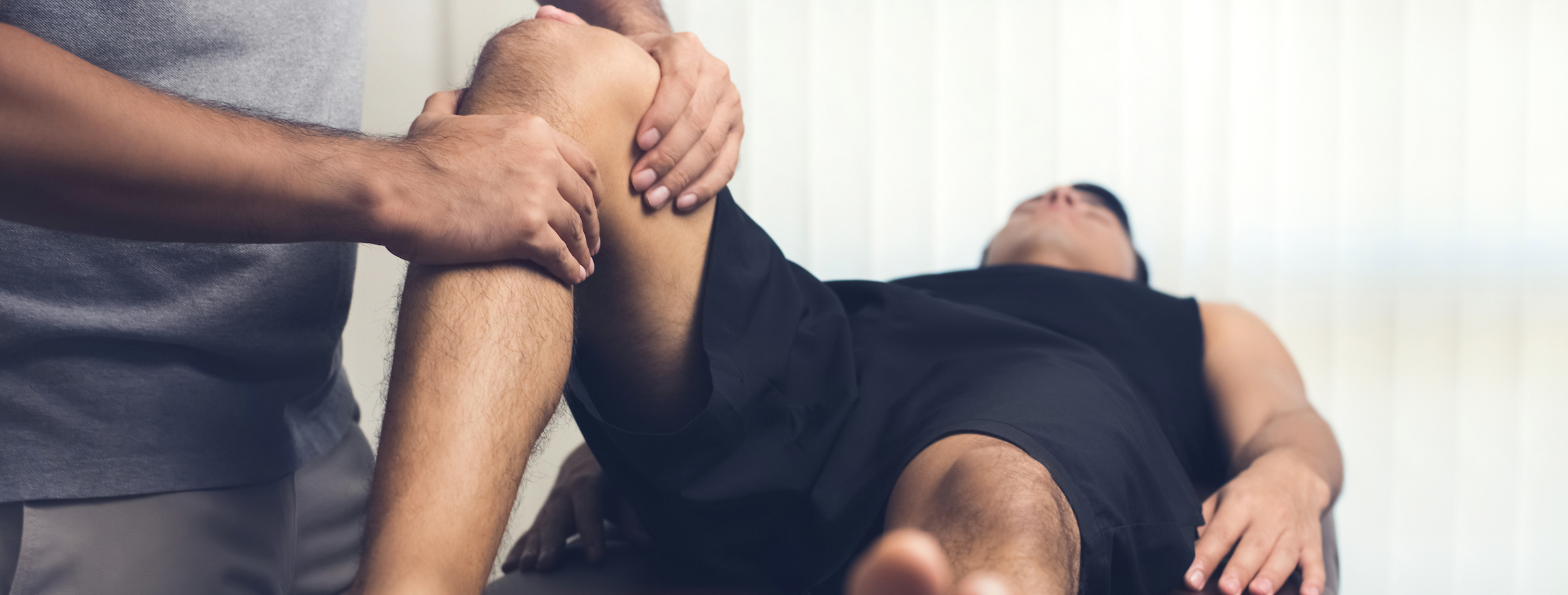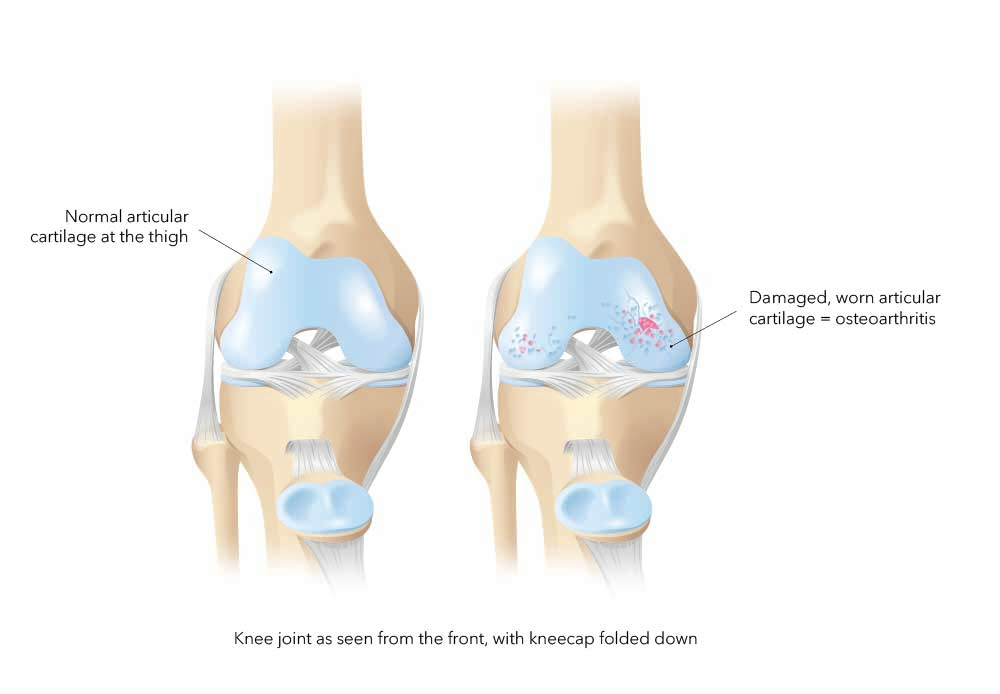Our services for your knee treatment
Conservative therapies
Surgery is not always necessary to treat osteoarthritis of the knee. Conservative therapies are often sufficient to reduce pain. These include a joint-friendly lifestyle, weight reduction, physiotherapy (e.g. according to GLA:D) or physical therapies. With the help of special insoles and medication (for pain and cartilage strengthening), the knee can be relieved and the cartilage protected or strengthened.
Treatment options:
-
Anti-inflammatory and pain-relieving medication
-
Medication and substances for cartilage strengthening
-
Medical training therapy/physiotherapy
-
Injections into the joint with lubricants (hyaluronic acid or autologous blood) and anti-inflammatory medication (cortisone)
-
Aids such as walking sticks, insoles, health shoes
-
Changing lifestyle habits with regard to sport, obesity, diet, etc.
-
These measures can reduce osteoarthritis pain and slow down the progression of cartilage wear. Unfortunately, osteoarthritis itself cannot be stopped or cured.
Injections with hyaluronic acid
Hyaluronic acid can be used to reduce friction in the affected cartilage surface of the knee. The hyaluronic acid preparation used for this purpose is a synthetically produced lubricant. It is injected directly into the affected joint. After the injection, it is possible to move the joint better. The additional «lubrication» means that the joint is less irritated. This prevents joint inflammation and reduces pain associated with osteoarthritis.
The result of the lubrication injections depends on the stage of osteoarthritis. The majority of patients report not only pain relief, but also an improvement in their own quality of life. The treatment consists of three injections, lasts for a certain period of time and can be repeated at any time.
Surgical treatments
If conservative treatments do not have the desired effect, surgery is usually necessary to treat knee osteoarthritis.
A knee prosthesis is used to replace a painful or restricted knee joint with an artificial joint implant. This procedure is often used in patients with osteoarthritis to relieve pain and restore mobility.
The knee prosthesis consists of various components that mimic natural joint movement, allowing the knee to function smoothly again.
The procedure to implant a knee prosthesis is usually performed under general anaesthetic and takes several hours. The Swiss Medical Network uses the latest technical robots such as the ROSA® and the fast track procedure agile+® to perform this procedure as precisely as possible. After the operation, patients usually have to start physiotherapy to strengthen the muscles and improve the mobility of the new joint. Recovery time can vary, but many people are able to walk normally and carry out their daily activities without pain after a few weeks.

Aftercare
Depending on the procedure, follow-up treatment can be carried out on an outpatient or inpatient basis. The period of follow-up treatment involves stabilising the new joint and training movement sequences. The patient should also learn what he or she needs to consider in everyday life. Rehabilitation is carried out over a period of three weeks and consists of movement therapy, gait training and physiotherapy.






